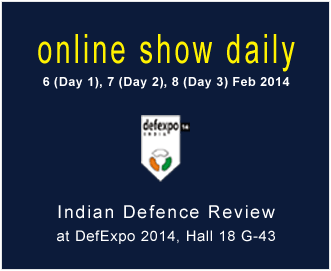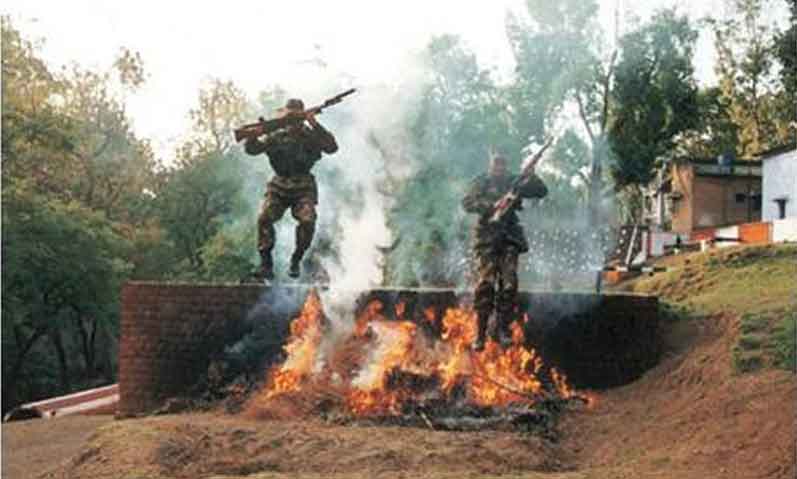By age-old convention, most wars have various forms of tactical operations undertaken under one overall plan – set-piece, irregular and Special Operations, for example. Indeed, the so called ‘conventional war’ has always had unconventional tactical recourses built into it. The infantry battalion has been in lead role in such irregular or unconventional operations, its flexibility of structure, weaponry and training allowing it to be moved by any mode of transport and fielded in any of the kind of aforesaid operations – all with equal proficiency and without much ado. The final test may, therefore, be to evaluate the significant flexibility which the infantry battalion has traditionally possessed.
“Do not wait to strike until the iron is hot but make it hot by striking.” —William Sprague
The central concern must be about the intangible assets that go to impart battle winning characteristics to any military unit…
Days of the Infantry
Evolution of the infantry as the decisive arm of war fighting is a phenomenon moored at the rise of British power in India, around the middle of the eighteenth century. Before that, victory favoured that force which committed its cavalry more effectively. After its introduction in the First Battle of Panipat, artillery joined as the second battle winner. Notably, these arms had generally been fighting as distinct elements of battle, inter-arm coordination being difficult if not impossible to implement. Arguably, it was the period of the Carnatic Wars and the Battles of Plassey and Buxar when the infantry’s steadfast defence from fortified redoubts followed by ‘volley and charge’ tactics carried the day, with artillery and cavalry playing their designated roles to prescribe the outcome1. Indeed, having conquered India with their ‘Sepoys’, it was the British who crowned the infantry as the ‘Queen of Battle’. It is important to understand as to why they chose to do so – because similar factors prevail even today.
With the decline of the Mughal Empire, horse-cavalry became difficult to maintain. Horses had to be imported from West Asia over a tedious logistics chain and bred in large depots. Obviously, it was frightfully expensive to raise and maintain cavalry. Development of the artillery, having earlier pushed the elephant arm to the services role, made cavalry charges even more costly to execute. An overseas trading company, stingy with investments as it had to be, the British East India Company, therefore, found it expedient to build up the infantry’s role in their campaigns. Development of field-craft, field works and tactical ground manoeuvres with high-technology artillery in support thus turned into an effective recourse of battle dominance, while the cavalry reconnoitred and shaped the battlefield before being committed to deliver coup de grace.2
Having validated its battle worthiness during the Carnatic, Bengal and Mysore Wars of the eighteenth century, the nineteenth century saw the infantry gaining unprecedented structural as well as tactical flexibility. That characteristic permitted the infantry to operate under as diverse situations as the Maratha, Burma, Sikh, North-West Frontier and the First World Wars3. Meanwhile, in the intervening decades, the British chose to be increasingly dependent on lighter versions of the infantry to exercise their authority. These were the ‘irregular levy’ or armed ‘constabulary’. Gradually, in tune with developments in the realm of warfare, the infantry battalion assumed unique characteristics, developing into a microcosm of the army to hold within itself the elements of anti-armour, artillery, engineers, signals and even the services.4
Empowerment of any military unit is not just about modernisation of weapons and equipment…
Obviously, that development was dictated by the fundamental principle of organisational structuring which rules that a military unit must have at its express disposal what minimum it takes to perform a routine operation. The primacy of infantry was also an imperative of terrain in the South-East Asia and Pacific Theatres of the World War II.
Outbreak of insurgencies and external aggressions over mountainous terrain has caused that primacy to continue in the post-independence realm. It was so that the 1971 War generation found the infantry battalion to be a most potent force. Besides the tangible assets in terms of weapons and equipment, the most remarkable asset that force wielded was that of the spirit of infantry which thrived upon a fundamental attitude of ‘do it, preferably yourself’. That spirit was, of course, sustained by a high degree of tactical acumen that was earned by relentless ground training – ‘muddy and torn dangri’ in Sapper parlance. The ‘CO Sahib Bahadur’, as the Commanding Officer was referred to, was a ‘God’ in every respect while the Company Commander was one in the making. Their prerogative to keep the upper hierarchy ‘in their place’ was respected; not that they were overly concerned about seeking endorsement of their preferences. Aggression was the order; ‘feel good’ feedback was unheard of; exaggeration was taboo. The battalion demanded all the resources that it could think of, created a scene before taking what it could get and proceeded to accomplish the task it had to without fuss.
Indeed, the infantry battalion was a ‘power house’. It still is – for the good of the nation. But then it may be a good idea to test whether it remains empowered in concert with the contemporary complexities.
Obligation of Empowerment
Empowerment of any military unit is not just about modernisation of weapons and equipment, though that is a reckonable factor. These tangible matters are yet manageable, if with some difficulties. Truly, the central concern must be about the intangible assets that go to impart battle winning characteristics to any military unit. Unless nurtured in continuity, these assets are liable to turn stale and lead to debilitation of the military organisation. Indeed, it is the intangible characteristics that distinguish the victorious from those who just fight. It is, therefore, wise to test the efficacy of such intangible assets once in a while.
Filial communication between the various levels of leadership and the led seems to have been frozen…
Over the recent years, a series of modernisation schemes have been introduced to keep the infantry battalion as strong as the contemporary demands of warfare dictate. These schemes cover weaponry, war-like equipment, communications, mobility and accoutrement; fructification of such schemes could have been more brisk though. The real thrust of introspection, therefore, may be to go past the visible developments and have a feel of the core.
Intangible Assets
Arguably, when considered in terms of their empowerment under the overall dispensation, there may be observed signs of the infantry battalion wilting. In this context, it may be worthwhile to take note of certain observations. One, in the contemporary days of small team operations, sophisticated weapon and equipment systems and operational complexities, a shortage of battle leadership is stark. Besides, filial communication between the various levels of leadership and the led seems to have been frozen. Admittedly, this diminution afflicts all arms and services, but that should not be a consolation for the infantry. Two, while it may not be mandatory to get drenched and dirty (one believes that it still is), training is not the compulsory grind for every soldier as it used to be in the past; that is, thanks to administrative commitments, attachments, roll of medical categories, shortage of training areas and restriction on ammunition. But even if the constraints are many, more telling is the fact that these are stoically accedes to.
 Three, the ‘power-factor’ of the battalion, the Officer Platoon Commanders, has vanished. Besides, the Company Commanders have turned non-entities while the Commanding Officers are expected, or inclined, to seek clearance on even matters mundane. Four, infantry units see less of their supporting arms; the mutuality of operational understanding, the intimate ‘we’ factor so to say, seems to be fading. The consequences, obscured but to the most intimate peers, would certainly surface when the entire military institution is put to severe test – not just in exercises or in fighting militants, but in full scale war, that being the army’s sanctified mandate.
Three, the ‘power-factor’ of the battalion, the Officer Platoon Commanders, has vanished. Besides, the Company Commanders have turned non-entities while the Commanding Officers are expected, or inclined, to seek clearance on even matters mundane. Four, infantry units see less of their supporting arms; the mutuality of operational understanding, the intimate ‘we’ factor so to say, seems to be fading. The consequences, obscured but to the most intimate peers, would certainly surface when the entire military institution is put to severe test – not just in exercises or in fighting militants, but in full scale war, that being the army’s sanctified mandate.
No doubt, empowerment of the infantry battalion is contingent upon higher quality of artillery and air support than what is guaranteed at the present. Similarly, terrain permitting, unleashing of mechanised forces for them to secure the central objective in their own manner is another factor. Indeed, every arm and service has crucial roles to perform in the empowerment of the infantry battalion. But to focus upon the subject matter under discussion, we may invoke some ‘soldier-speak’ to test few representative instances, the purpose being to register the signs of possible dilutions which might coalesce to enfeeble the infantry battalion.






Part 2…..
4. Officer Strength. In a peace station you will not find more than 5 to 6 officers present in an Infantry Battalion. If you count the key appointments C O, Second-in-Command, Adjutant and Quartermaster who are the core management appointments, what is left for the rest of the Battalion is one or two officers and in some cases it will be young officers with little service and experience. Therefore the crucial factor of troop administration and management is missing and what is sorely affected is the Battlefield Leadership training and development.
5. Equipment is mostly antiquated and of substandard value. Training ammunition is short. Crucial equipment required for the conduct of operations is not available. When troops are inducted some of the weaponry is given to the units on adhoc basis as sector stores with which troops are not familiar. Night fighting capability is almost nil. A lot more specifics can be put across……….
Somebody needs to wake up and it’s the senior lot of the Indian Army and the Government.
The General has a very valid point about the Infantry being the Battle Winning factor. He has broadly touched most of the issues pertaining to the Infantry. However there are certain core issues that need to be addressed as far as the Infantry is concerned and these are.
1. Personal Equipment of an Infantry man remains to be of a very poor standard. An Indian soldier isn’t even authorised a mattress yet. He still sleeps on a ‘durrie’. Infantryman does the dirtiest of jobs and is the most poorly looked after soldier of the Indian Army.
2. Accommodation of our soldiers is sub- standard in peace areas and in operational areas its unliveable and pathetic. Even as a Commanding Officer I lived in something that was akin to a shanty. Everything is improvised and there is nothing standard.
3. Training – Various training modules have been put in practice for training the infantry battalions during peace time. However training is the first casualty on the arrival of the Battalion to a peace area. 35% of the battalion will be permanently out i.e. 25 % on leave and another 10 % on Army courses of Instruction and Administrative out Station Duties. Administrative duties are of such magnitude in the Indian Army that at the end of the day not a single man is available for carrying out training. Ask the Adjutant of an Infantry Battalion and he will tell it all. We are overburdened in Administrative management of our own unit. Guard Duties and fatigues and maintenance of the military areas have sadly fallen upon the Infantry battalions. A Command House Guard consumes an Infantry company for full 3 months. I guess the Army Commander knows what I am saying. Most of the training reports are just on paper only.
contd………….